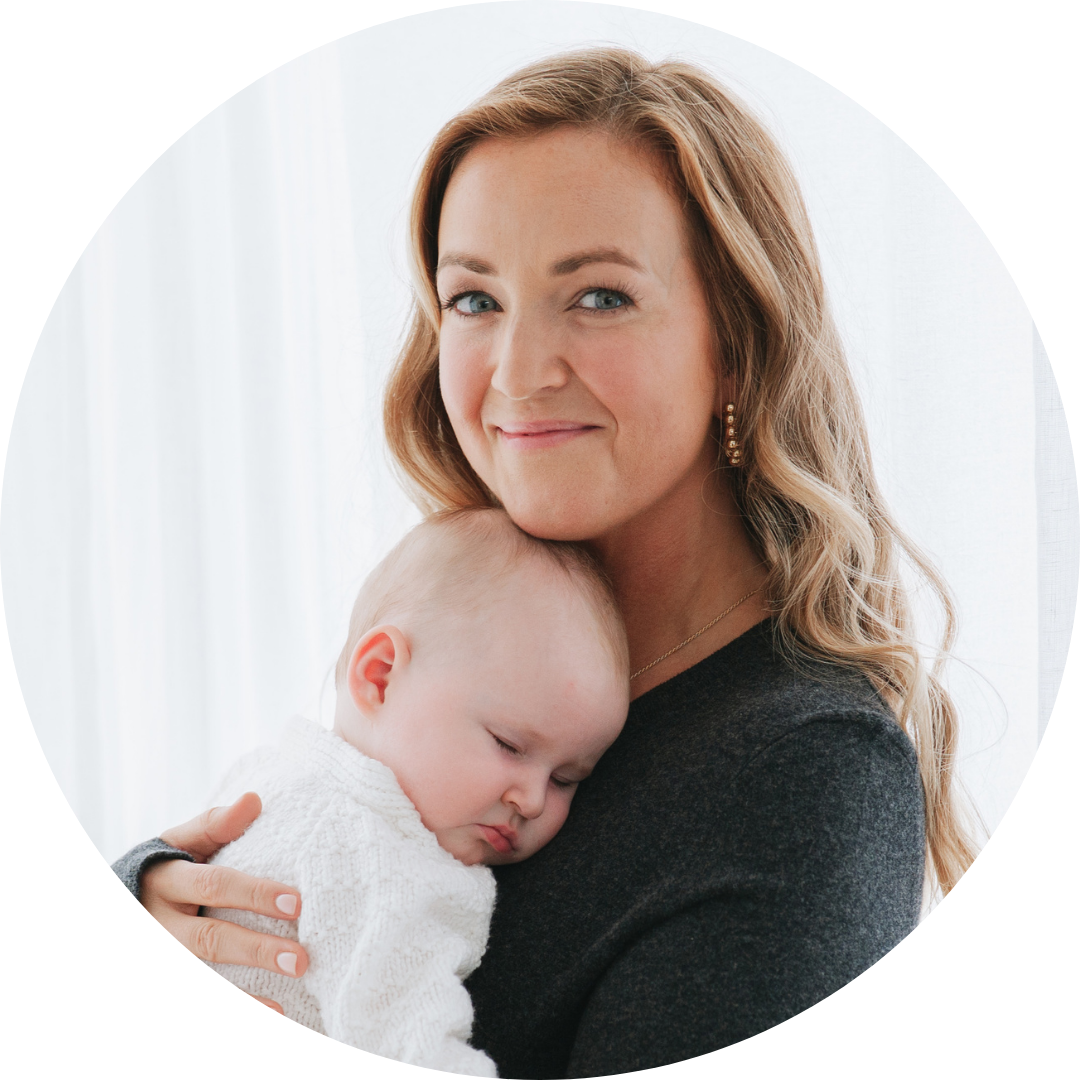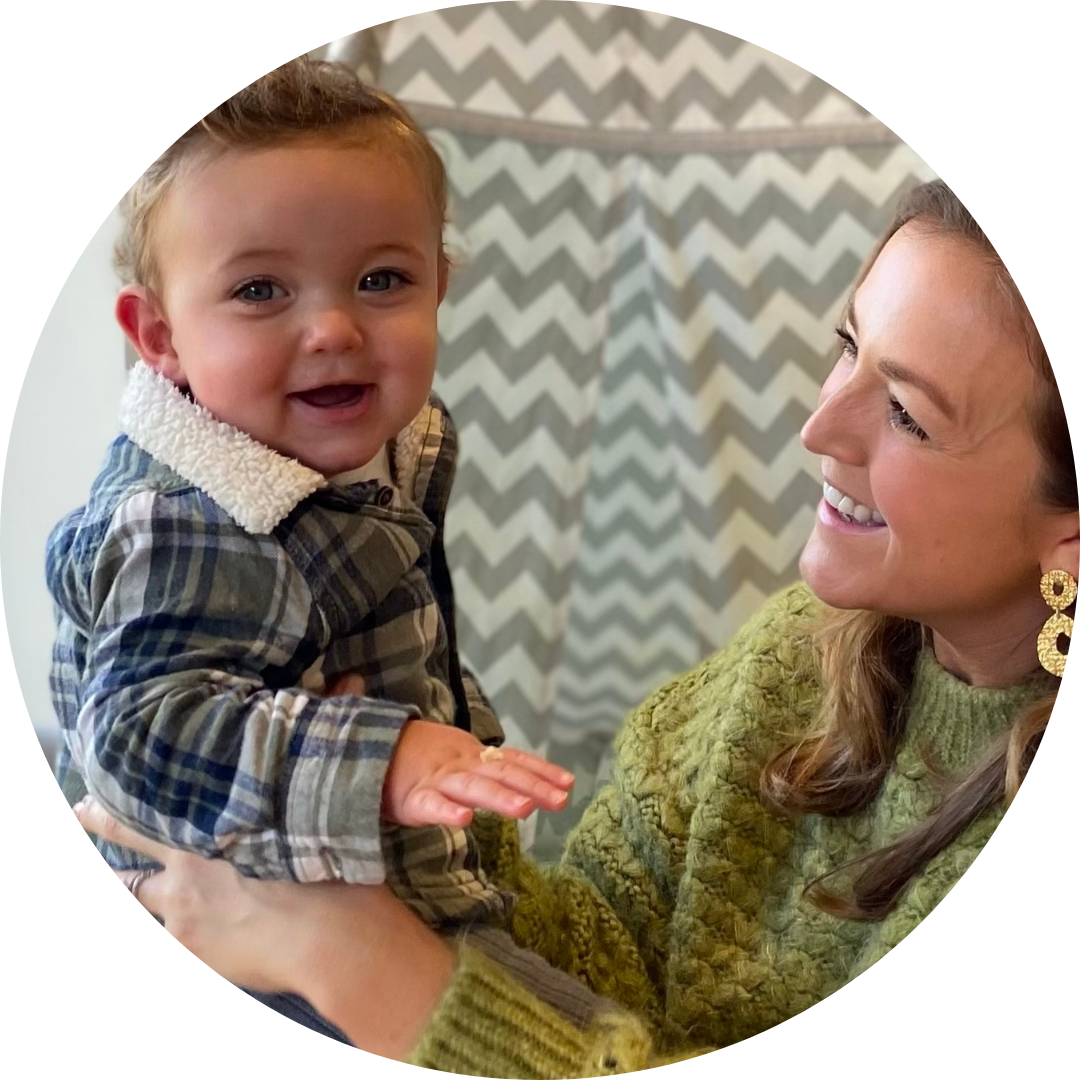You've reached that exciting milestone where your baby can fall asleep independently at bedtime - congratulations! But why are they still waking multiple times after 3am needing a rock or a feed to get back to sleep? Or perhaps they self-settle beautifully for naps but can't seem to do the same at night.
This inconsistent self-settling is actually quite common and, with the right approach, doesn't take long to overcome. If this sounds familiar, you're in the right place. Let's explore why this happens and what you can do about it.
Think of it like a scale
Imagine self-settling as a scale, with 0% meaning your baby completely depends on you to fall asleep, and 100% meaning they self-settle every single time. If your baby has started self-settling at bedtime only, they're on their way - that's fantastic progress! But they've perhaps only "got it" about 30% of the way, so now it's time to work on the next stages.
Need a blueprint to follow?
Our Sleep Guides give you a step-by-step plan to follow to help your little one to become a great sleeper.
Some times of day are easier to settle than others
Bedtime typically presents the easiest opportunity for your baby to self-settle. This is when their melatonin levels (the sleep hormone) are at their highest, and they've built up sufficient "sleep pressure" from being awake during the afternoon. Both factors mean they're primed and ready for sleep, making bedtime the ideal time to introduce independent sleep skills.
This biological advantage is why many babies master self-settling at bedtime first before extending this skill to other sleep periods. It's not that they're being inconsistent - they're simply working with different biological circumstances throughout the 24-hour cycle.
The hardest bits to crack
The most challenging time for your baby to self-settle is typically around 4am and early morning wake-up. During this period:
• Sleep is naturally lighter
• Cortisol levels (the wake-up hormone) begin rising
• If the room isn't completely dark, light may start filtering in
Similarly, settling back to sleep during their long lunchtime nap tends to be difficult. These tough spots are usually the last to improve when we're working with parents on sleep training.
Why is my baby inconsistent with self-settling?
There are several reasons why your baby might self-settle sometimes but not others:
1. Sleep pressure variations
The amount of sleep pressure (how tired they are) varies throughout the day and night. At bedtime, after being awake all afternoon, they have high sleep pressure making it easier to fall asleep independently. By comparison, after completing one sleep cycle in the middle of the night, they have much less sleep pressure making it harder to drift off again without assistance.
2. Sleep environment consistency
Small environmental differences between sleep periods can impact self-settling success. For example, perhaps the room is perfectly dark at bedtime but early morning light creeps in during those 5am wake-ups.
Pro Tip: Read our blog titled ‘Optimising your baby’s sleep environment’ here to ensure that their bedroom environment isn’t the cause for any unnecessary wake ups.
3. Different settling methods
If you're using different approaches at different times (for instance, putting them down awake at bedtime but feeding to sleep for naps), your baby may be confused about what's expected. Consistency is key to avoid any confusion and minimise tears, if there are any.
4. Developmental stages
Babies go through numerous developmental leaps that can temporarily disrupt sleep patterns. What worked last week might suddenly become ineffective during a growth spurt, teething episode, or cognitive leap.
Use a consistent settling method
If you've used a specific settling method to help your little one learn to start settling independently (such as controlled comforting with gentle stroking and shushing while they're in their cot) and it's worked well, now's the time to apply that same approach to night wakes and naps.
Recognize that it may be more challenging for them to master self-settling during early morning hours or naptime, but remember: your settling method worked before, so it can work again! Consistency and patience is absolutely key here.
For babies who are learning to self-settle, we recommend two main approaches:
Controlled comforting
This involves staying beside your baby's cot, offering reassurance through gentle touches and soothing sounds as they learn to fall asleep. You gradually reduce your involvement as your baby becomes more confident.
Controlled crying
This method uses short, timed intervals where you briefly leave the room, returning regularly to reassure your baby without picking them up unless absolutely necessary.
Timing is everything
Making sure that you're putting your baby down at the right times is absolutely crucial to achieving consistent self-settling. If your timing is off, no amount of sleep training will be effective.
If you try to put your baby down too early, they'll likely cry because they're simply not tired enough and will take a long time to settle. Put them down too late, and you'll face tears because they're overtired and their stress hormones are elevated.
Similarly, if your baby hasn't napped for long enough at the appropriate times during the day, you'll likely experience frequent night wakes regardless of their self-settling abilities. There truly is a formula to good baby sleep, and routine is at the heart of it.
The importance of naps for night-time sleep
One often overlooked aspect of inconsistent self-settling is the connection between daytime naps and night-time sleep. Many parents are surprised to learn that short or poorly timed daytime naps directly impact a baby's ability to self-settle at night.
As we often tell parents: "You can't improve night-time sleep until daytime sleep is working well." When babies are overtired from insufficient daytime sleep, they produce stress hormones that make it harder for them to settle and stay asleep.
The lunchtime nap challenge
The middle-of-the-day nap is often the most challenging for babies to extend. Many babies will wake after just 30-40 minutes, right at the end of their first sleep cycle, and struggle to connect to the next one.
Consistent re-settling is key here. When your baby wakes after a short period, try your settling method for a good 20-25 minutes before trying plan b. They may initially resist being re-settled but will typically become more receptive with consistent practice.
If your baby still doesn't extend their nap after your attempts, don't worry. In the interim, you can use strategies like bringing forward their next nap or adjusting bedtime to compensate for the short nap.
Early morning wakes
Early waking (before 6am) can be one of the hardest sleep issues to overcome precisely because it's affected by multiple factors including:
• Room darkness
• Appropriate daytime sleep balance
• Overtiredness
• Undertiredness
• Room temperature
• Habit
If your baby is self-settling at bedtime and for other night wakes but consistently waking early and refusing to go back to sleep, try treating this as a night wake rather than starting your day. Use your settling method consistently for any wakes before your desired wake time, even if it seems like they're wide awake and ready to start the day.
Creating a sleep-conducive environment
Your baby's sleep environment plays a crucial role in successful self-settling. Here's what to focus on:
Darkness
The room should be pitch black, especially for early morning hours. Even small cracks of light can signal to a baby that it's time to wake up.
Temperature
Keep the room between 16-20°C (61-68°F) for optimal sleep.
White noise
Many babies sleep better with continuous white noise which can help mask household sounds and recreate the familiar whooshing sounds from the womb which can be calming for younger babies.
Swaddle or sleeping bag
Using a sleeping bag for all sleep periods helps signal to your baby that it's time to sleep.
The importance of consistency
When tackling inconsistent self-settling, consistency is your most powerful tool. Babies learn through repetition and pattern recognition. By using the same settling method, sleep environment, and routine cues for all sleep periods, you're teaching your baby what to expect.
It may take a few days (sometimes up to two weeks) of consistent application before you see improvement, but most babies respond well to predictable approaches.
When to expect progress
Most babies who already self-settle sometimes will extend this skill to other sleep periods within 5-10 days of consistent practice. However, you may see a pattern of:
1. Initial resistance
2. Gradual acceptance
3. Occasional regression (especially during illness, teething, or developmental leaps)
4. Consistent self-settling
Be patient with this process and recognize that occasional setbacks don't erase the progress you've made. If your baby was sick or teething and needed extra support for a few nights, you can simply return to your consistent approach once they're feeling better.
Don’t give up!
Remember that learning to self-settle consistently across all sleep periods is a skill that takes time to develop. Your baby hasn't "failed" if they can't do it every time - they're just still in the learning process.
By focusing on consistency, appropriate timing, sleep environment, and a reliable settling method, you can help your baby become a confident, independent sleeper at all times of day and night.
The fact that your baby can already self-settle sometimes is excellent news - it means they have the capability and are well on their way to mastering this important skill. With your consistent guidance and support, they'll soon be settling independently for all sleep periods.
If you're still struggling after two weeks of consistent practice, it may be worth exploring whether there are other factors at play, such as a schedule that needs adjusting or potential sleep associations that need addressing.
Remember, good sleep isn't just about your baby - it's about the whole family's wellbeing. When everyone gets the rest they need, parenting becomes more enjoyable and your baby thrives too.









